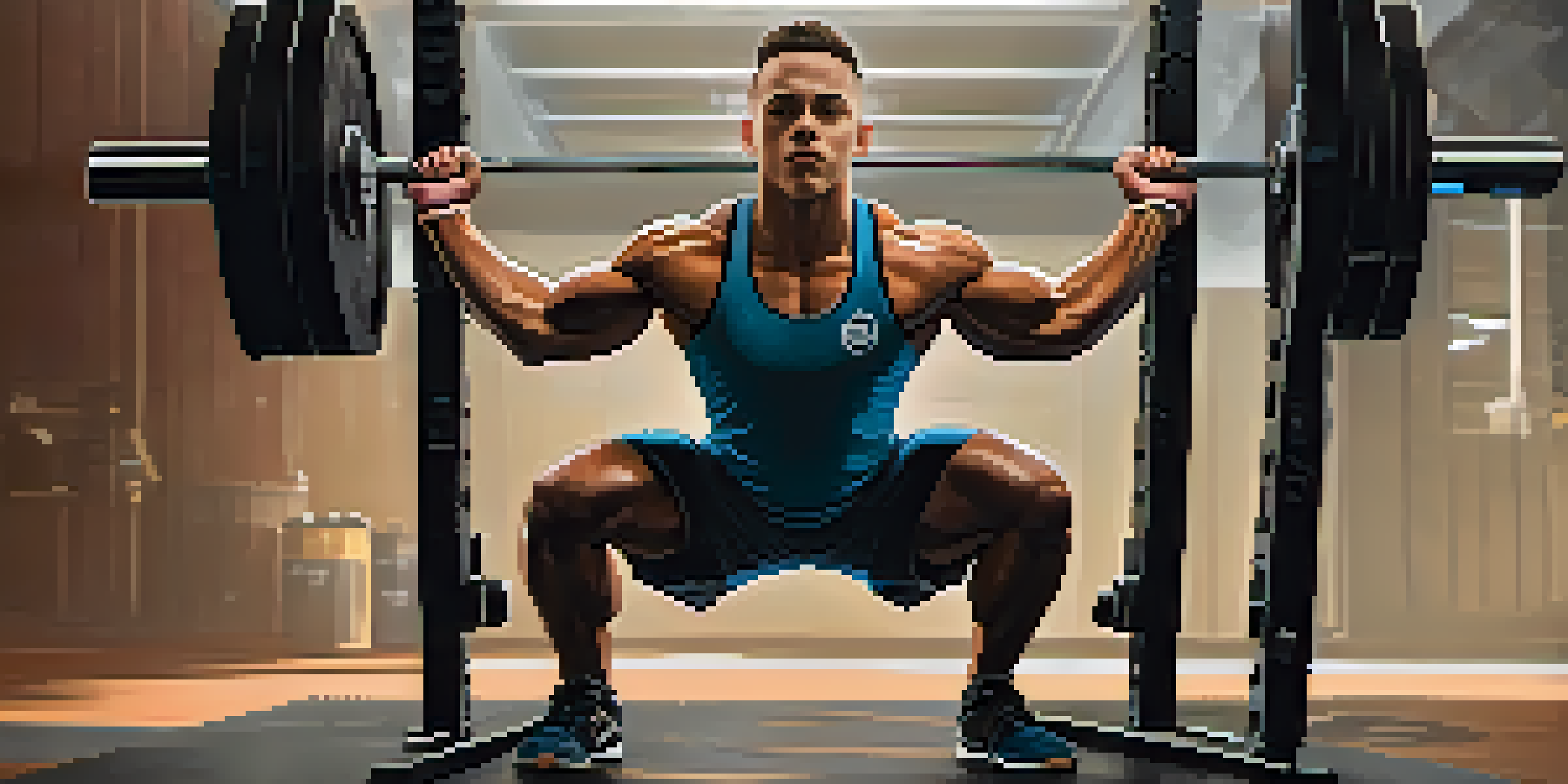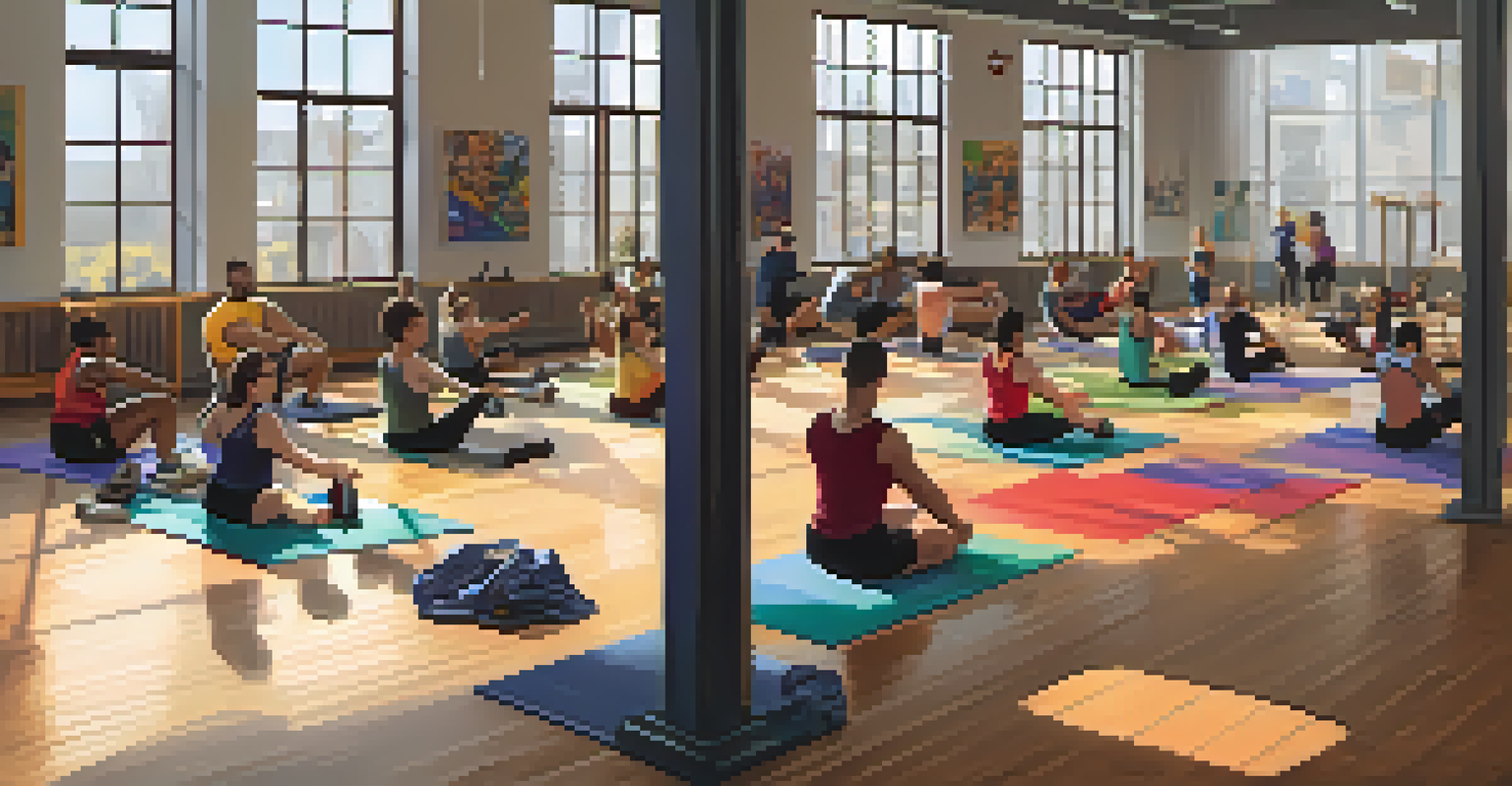The Best Complementary Exercises for Powerlifters

Understanding the Importance of Complementary Exercises
Complementary exercises are vital for powerlifters aiming to improve overall performance. While the main lifts—squat, bench press, and deadlift—build raw strength, these additional exercises help address muscle imbalances and weaknesses. By integrating these movements, you can enhance stability and prevent injuries, which are crucial for any serious lifter.
Strength does not come from physical capacity. It comes from an indomitable will.
For instance, if a powerlifter focuses solely on bench pressing, they might neglect their shoulder stability. This oversight can lead to injuries and hinder progress. Therefore, incorporating complementary exercises can round out your training by strengthening muscles that support your main lifts.
Ultimately, the goal is to create a well-rounded physique that not only lifts heavy but also remains functional. By understanding the importance of these exercises, you set yourself up for long-term success in powerlifting.
Building Core Strength with Planks and Variations
A strong core is the backbone of effective lifting, making planks and their variations essential for powerlifters. These exercises engage multiple muscle groups, helping to stabilize your body during heavy lifts. The beauty of core workouts is that they can be done anywhere, making them a convenient addition to your routine.

Consider trying side planks, which target the obliques, or plank variations with stability balls for an added challenge. These exercises not only help in maintaining proper form but also in transferring power effectively from your core to your limbs during lifts. This power transfer is crucial when you're pushing your limits.
Complementary Exercises Boost Performance
Integrating complementary exercises helps address muscle imbalances and enhances overall stability, leading to improved powerlifting performance.
Incorporating core-strengthening exercises into your regimen will enhance your lifting performance and contribute to better posture and balance. A stable core equals a strong foundation for all your powerlifting endeavors.
Enhancing Mobility with Dynamic Stretching Techniques
Mobility is often overlooked, yet it's a critical component for successful powerlifting. Dynamic stretching techniques, such as leg swings and arm circles, help improve your range of motion, which can lead to more effective lifts. A well-mobilized body is less prone to injuries and can execute lifts with better technique.
The difference between a successful person and others is not a lack of strength, not a lack of knowledge, but rather a lack in will.
Incorporating these stretches into your warm-up routine prepares your muscles for the work ahead. Think of dynamic stretching as a way to 'grease the joints,' allowing for smoother movements during heavy lifts. This preparation can make a significant difference in your overall performance.
By prioritizing mobility through dynamic stretches, you can enhance your lifting technique and reduce the risk of injuries. Remember, a flexible lifter is often a stronger lifter!
Targeting Muscles with Accessory Lifts
Accessory lifts are supplementary exercises that target specific muscle groups, improving weaknesses and enhancing your main lifts. For example, incorporating exercises like Romanian deadlifts can bolster your hamstring strength, directly benefiting your deadlift performance. These targeted workouts allow you to hone in on specific areas needing improvement.
In addition to Romanian deadlifts, consider exercises like tricep extensions to enhance your bench press. Accessory lifts can be tailored to address your unique strengths and weaknesses, creating a personalized approach to training. This tailored training ensures that you are always progressing, even on days when your main lifts feel stagnant.
Core Strength is Essential for Lifting
A strong core stabilizes the body during heavy lifts, making core exercises like planks vital for effective powerlifting.
Ultimately, accessory lifts are a powerful tool for any powerlifter looking to build strength, improve technique, and avoid plateaus. They're not just add-ons; they’re essential for your growth as a lifter.
Incorporating Conditioning Work for Endurance
While powerlifting mainly focuses on strength, incorporating conditioning work can greatly enhance your endurance and performance. Exercises like kettlebell swings or sled pushes can improve cardiovascular fitness while still benefiting your strength training. This blend can lead to more productive training sessions and quicker recovery times.
Think of conditioning as the glue that holds your strength together. It helps maintain your stamina during long lifting sessions, allowing you to push through the fatigue. Plus, a well-conditioned body can recover faster between sets, meaning you can lift heavier for longer.
By adding conditioning work into your routine, you create a well-rounded training approach that not only builds strength but also supports your overall fitness. It’s a win-win for your powerlifting journey!
Utilizing Eccentric Training for Greater Strength Gains
Eccentric training focuses on the lengthening phase of muscle contraction, and it can lead to significant strength gains for powerlifters. By emphasizing the lowering phase of a lift, such as a slow squat descent, you create more time under tension, which promotes muscle growth. This method can enhance your strength and control during the actual lifts.
Incorporating eccentric training can also improve your technique, as it encourages greater mindfulness of form. Imagine it as mastering the art of control; the slower you go, the more aware you become of your body mechanics. This awareness can translate into more powerful lifts.
Recovery is Key to Progress
Prioritizing recovery and active rest days ensures your muscles heal and grow stronger, enhancing your overall lifting potential.
By integrating eccentric training into your routine, you’re not just lifting weights; you’re building a solid foundation for future success. This approach can help you break through barriers and elevate your performance.
The Role of Recovery and Active Rest Days
Recovery is often the unsung hero of any training program, especially for powerlifters. Incorporating active rest days with light exercises, like yoga or swimming, can help facilitate recovery. These activities promote blood flow to sore muscles, aiding in the healing process and preparing you for your next training session.
Think of recovery as a necessary pause that allows your body to rebuild stronger. Just like how a well-cooked meal requires time to simmer, your muscles need time to recover and grow. Embracing recovery days can prevent burnout and keep you motivated in the long run.

Incorporating proper recovery strategies ensures that you remain fresh and ready to tackle your lifts. Prioritizing recovery not only enhances performance but also fosters a sustainable lifting lifestyle.
Creating a Balanced Program with Complementary Exercises
To maximize your powerlifting performance, it’s essential to create a balanced program that integrates complementary exercises seamlessly. This means considering your main lifts and determining which areas need additional focus. A well-rounded program not only promotes strength but also fosters overall athleticism.
For instance, if your squat is lagging, you might add more quad-focused accessory work like leg presses or lunges. Alternatively, if your bench press needs a boost, prioritizing tricep and shoulder exercises can make a significant difference. Tailoring your program to your personal needs ensures continuous progress.
Ultimately, a balanced training program that includes complementary exercises will lead to improved performance, reduced injury risk, and a more enjoyable lifting experience. Embrace the journey of powerlifting with a holistic approach, and watch your strength soar!